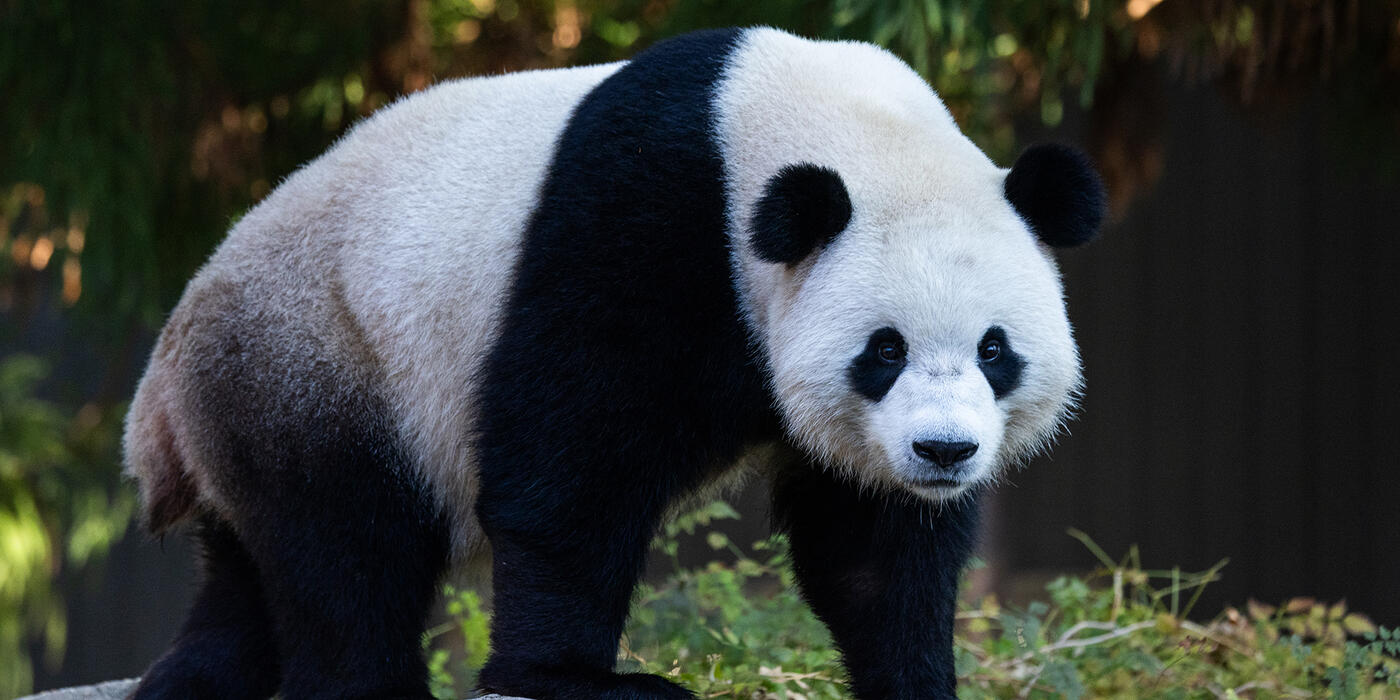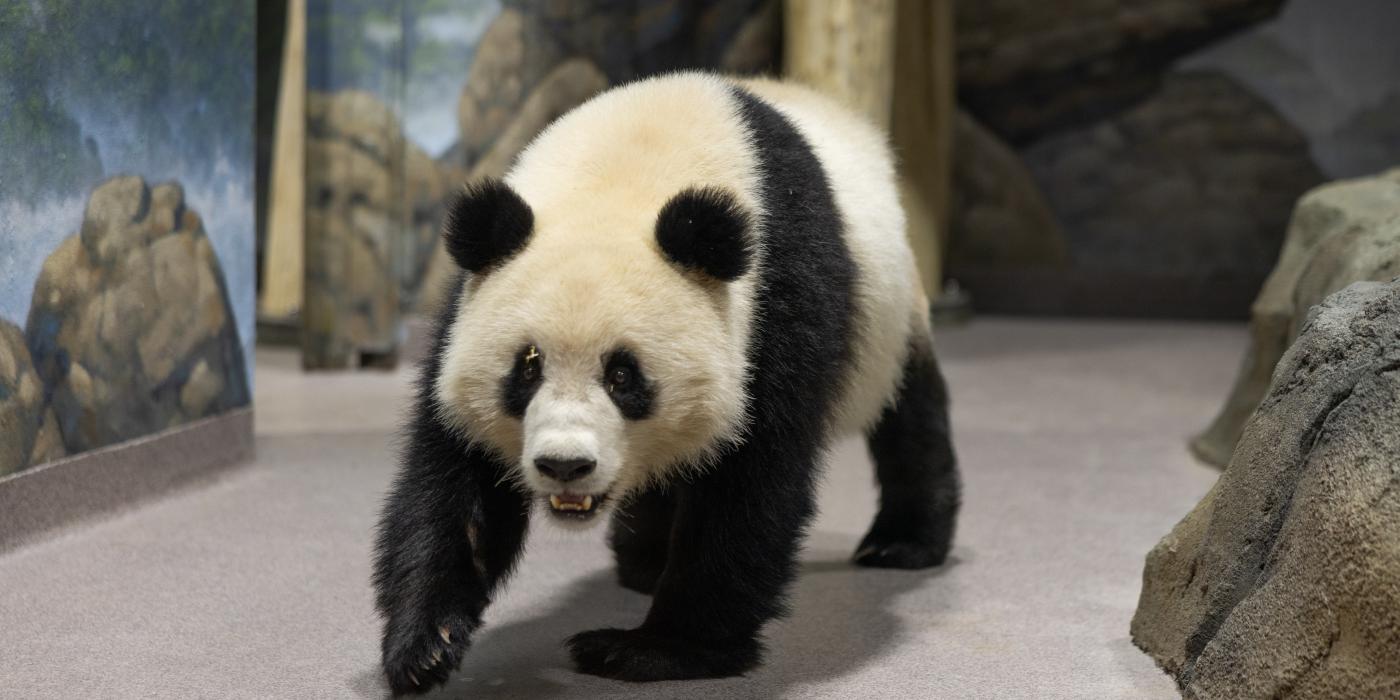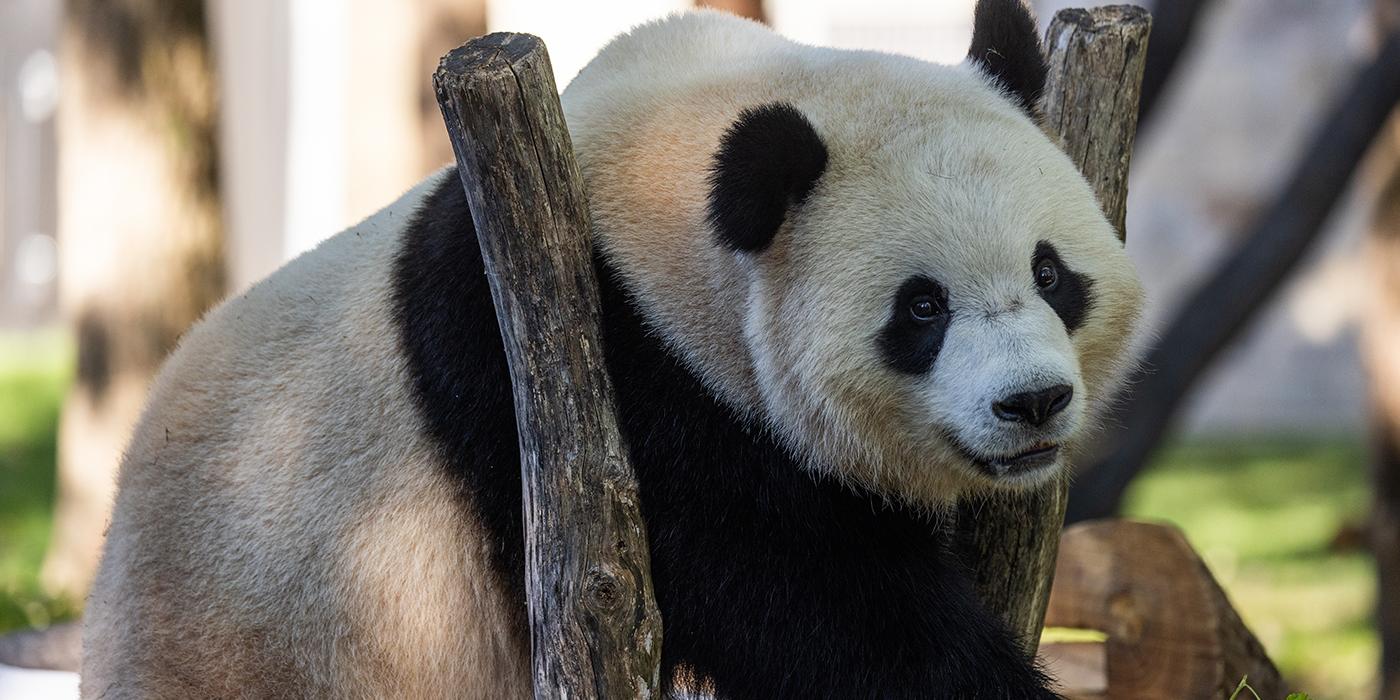Bao Bao's Departure FAQs
Why is Bao Bao leaving the Smithsonian’s National Zoo?
As part of the cooperative breeding program with the China Wildlife Conservation Association (CWCA) that the Smithsonian’s National Zoo and Conservation Biology Institute participates in for giant pandas, all panda cubs born at the Zoo depart to live in China by age 4. In China, giant pandas participate in the breeding program when they reach sexual maturity between 5 and 6 years old.
Giant pandas are listed as “vulnerable” by the International Union for Conservation of Nature (IUCN). There are an estimated 1,800 in the wild. Although that is an increase from the previous giant panda census, it is still not very many. The population remains vulnerable to threats from disease, climate change and habitat loss. Scientists in China are working to increase the number of wild pandas and their habitat. They are beginning to reintroduce pandas, born in human care, to the wild. It is possible that Bao Bao’s offspring or descendants may be reintroduced to the wild.
When is Bao Bao leaving the Zoo?
For the safety and security of Bao Bao and our staff, we will not release the exact date of her departure. Right now we are preparing for her to depart in the late winter of 2017. The Zoo and Friends of the National Zoo (FONZ) will organize special opportunities for fans to say goodbye to Bao Bao before she leaves.
How will Bao Bao travel to China?
FedEx will generously fly Bao Bao to Chengdu, China. A keeper and veterinarian from the Smithsonian’s National Zoo will accompany her. FedEx also donated a dedicated aircraft to bring Bao Bao’s older brother Tai Shan to China in 2010 and her parents, Mei Xiang and Tian Tian, to the United States in 2000. The panda team will monitor Bao Bao continuously during her trip and will travel with 55 pounds (25 kilograms) of bamboo, 2 pounds of apples (.90 kilograms), two bags of leaf-eater biscuits, 2 pounds of cooked sweet potatoes and 10 gallons (113 liters) of water. Keepers will spend the next several months acclimating her to a specially designed travel crate. The crate will be placed in the David M. Rubenstein Family Giant Panda Habitat either in one of the panda yards or in a behind-the-scenes area. Initially, keepers will ask Bao Bao to move through the crate every day. After she has become comfortable moving through the crate, they will gradually acclimate her to spending short periods of time in the crate with the door closed. She will be rewarded with her favorite treats when she chooses to spend time in the crate.
Where will Bao Bao live in China?
Bao Bao will live at one of the bases operated by the China Conservation and Research Center for the Giant Panda (CCRCGP).
Will anyone from the Zoo travel to China with Bao Bao?
Yes. One keeper and one veterinarian will travel to China with Bao Bao. They will stay with her continuously from the moment she leaves the Zoo until she arrives safely in China and is in the care of Chinese keepers.
Will the public have a chance to say goodbye to Bao Bao before she leaves?
Yes, the Zoo and FONZ will announce opportunities for FONZ members and the public to see and celebrate Bao Bao before she leaves for China.
Will Bao Bao meet Tai Shan when she is in China?
Giant pandas are solitary in the wild. Males and females mostly spend time together during the breeding season. Since Bao Bao and Tai Shan will not be recommended to breed with each other, they will never spend time together.
Will Bao Bao be uncomfortable living apart from her parents and younger sibling?
Giant pandas are solitary in the wild, and cubs separate from their mothers between 18 months and 2 years old. Bao Bao has been living separately from her mother, Mei Xiang, since March 2015. When keepers gradually separated them, Mei Xiang had stopped producing milk and was discouraging Bao Bao from nursing. Bao Bao has since become more territorial, which is normal for a young female bear, and does not like to spend time in areas very close her mother. Since adult males do not play any role in raising cubs in the wild, Bao Bao has never interacted directly with Tian Tian. They have had the opportunity to see each other through mesh windows, but have not expressed much interest in each other. Similarly, since panda siblings would not spend time together in the wild, Bao Bao has never interacted directly with Bei Bei.
Now that giant pandas are no longer endangered, why does Bao Bao have to go to China?
Although giant pandas have been reclassified as “vulnerable” by the IUCN they are not safe from threats. Scientists in China are working to reintroduce giant pandas born in human care to the wild. Reintroductions require a genetically diverse population of animals. Since Bao Bao is related to all the pandas at the Zoo, the best chance for her to help her species is to breed successfully in China. Her offspring or descendants could potentially be reintroduced to the wild.
When will Bao Bao breed?
Female giant pandas reach sexual maturity between 5 and 6 years old. She will have ample time to adjust to her new home before she experiences her first full estrus cycle and is introduced to potential males for breeding.
Will Bao Bao have a webcam in China?
That decision will be made by our colleagues in China.
Will Bao Bao understand her new keepers in China?
Although Bao Bao’s current keepers speak to her in English, during training they use hand signals and body gestures to ask her to do certain behaviors. Her keepers in China will also use hand signals and body gestures. The American team will have the chance to brief the Chinese team on hand signals, training and other behaviors.
What will happen to Bao Bao’s yard and indoor enclosure?
After Bao Bao moves to China, Bei Bei will transition to her yard and indoor enclosure. Bei Bei no longer solely relies on Mei Xiang to meet his nutritional needs. He regularly eats solid foods and only nurses occasionally. The Zoo’s nutritionists have developed a diet specially tailored for him. Keepers will monitor the interactions between Mei Xiang and Bei Bei very carefully to separate them if Mei Xiang shows any aggression toward Bei Bei. It is normal for females to display some aggressive behaviors towards their cubs to encourage them to establish their own territories away from their mothers.
Will Mei Xiang and Tian Tian Breed in 2017?
We are planning for the next breeding season. We expect Mei Xiang and Tian Tian to likely have the opportunity to breed naturally. Our expert panda team will monitor them closely and will also perform an artificial insemination as in past years. Bao Bao and Bei Bei were both born as the result of artificial inseminations.
Will anyone from the Zoo stay with Bao Bao in China to help her adjust to her new home?
Yes. A keeper will stay with her for a short time to help her adjust and help her new keepers learn about her.
How big is Bao Bao?
Bao Bao weighs 188 pounds (85 kilograms).
Will Bao Bao’s keepers see her again?
Keepers and scientists from the Smithsonian’s National Zoo and Conservation Biology Institute travel to China each year as part of collaborative conservation research and breeding efforts. It is possible that they may see Bao Bao during one of their trips, but they will not be making trips solely to see her.
How big is the travel crate Bao Bao will travel to China in?
The travel crate for Bao Bao’s trip to China is 55 inches wide by 75 inches long and 50 inches tall.
Will it be too cold during the winter for Bao Bao to make a long trip like this?
Giant pandas prefer cold weather. Their thick woolly coats keep them warm and repel water. It is better for giant pandas to travel in the winter months when it is cool, instead of the heat of the summer.
Related Species:



